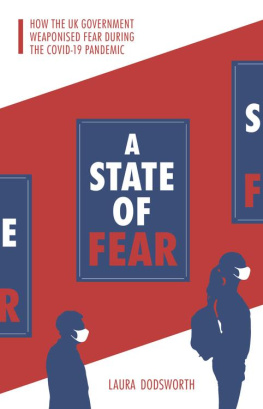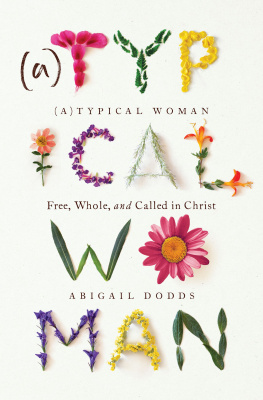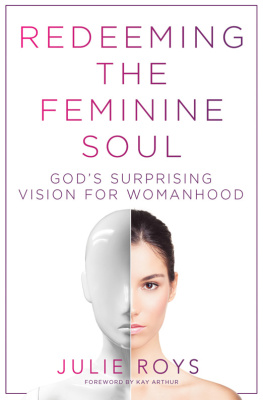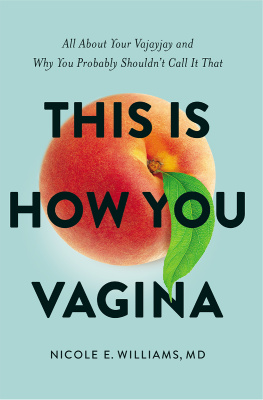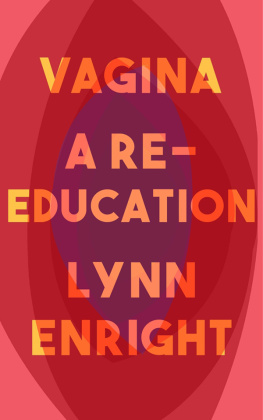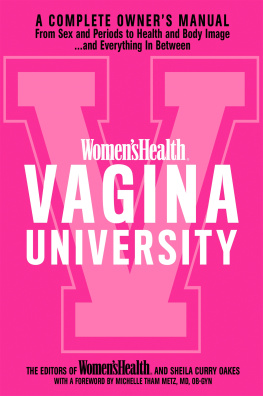womanhood:
the bare reality
womanhood:
the bare reality
Laura Dodsworth

Womanhood: The Bare Reality First published in 2019 by Pinter & Martin Ltd Text and images copyright Laura Dodsworth 2019
Laura Dodsworth has asserted her moral right to be identified as the author of this work in accordance with the copyright, designs and patents act of 1988.
All rights reserved.
ISBN 978-1-78066-465-1
Editor: Susan Last
Design: Blok Graphic, London A catalogue record for this book is available from the British library.
This book is sold subject to the condition that it shall not, by way of trade and otherwise, be lent, resold, hired out, or otherwise circulated without the publishers prior consent in any form or binding or cover other than that in which it is published and without a similar condition being imposed on the subsequent purchaser. The author and publisher disclaim, as far as the law allows, any liability arising directly or indirectly from the use, or misuse, of the information contained in this book.
Printed and bound in Poland by Hussar Pinter & Martin Ltd
6 Effra Parade
London SW2 1PS
www.pinterandmartin.com
www.barereality.net
Contents
Please note that all the stories in Womanhood are personal opinion. The views expressed are those of the contributors and are not endorsed by the creator or publisher. No book can replace the diagnostic expertise and medical advice of a trusted physician. Please consult your doctor before making any decisions that may affect your health, particularly if you suffer from any medical condition or have any symptom that may require treatment.
What is it, though? To Hamlet, with his head nestled on Ophelias lap, its nothing. For a great deal of human history, a great many people have agreed with him that what women have is a space, a hole, a lack that needs filling up with, inevitably, a man.
So pervasive is this absence that there isnt even really a name for it. Vulva and vagina sound off-puttingly medical in a way that penis and testicles dont. Dick or cock are fairly mild as swearing goes, but the C-word is a civility-shattering bomb. As the stories in this book show, the lack of an established female equivalent to willy means that families generate an idiosyncratic private vocabulary to talk about that thing that cant be talked about.
What exists between a womans legs and in her abdomen is a matter of such great silence, in fact, that even science hasnt got to grips with it. The structure of the vagina has barely been studied. The clitoriss existence has been denied and rediscovered in a cyclical pattern since the beginning of medicine. Even the pelvic floor, which women are so confidently enjoined to exercise, turns out to be an unknown realm: not a single thing, but a complex system of interrelated components, whose function is still little understood, despite the huge suffering of women who undergo tears or prolapses.
But while positive knowledge about the female body is remarkably limited, there is an endless supply of conviction that theres something wrong with it. Plastic surgeons to carve your labia into tidiness and rejuvenate your vagina (which is to say, tighten it, despite the fact that we have no measure of what shape a vagina is supposed to be). Cutters to excise your clitoris and make you a nice, manageable woman. Sex experts to tell you that the kind of orgasm you have is inadequate or impossible, whether thats Freud insisting the clitoral orgasm is immature, or contemporary headlines declaring vaginal orgasms to be myths. (But how can they know, when so little is known about the female body?) You can speculate on exactly how this general ignorance came about. Is it that the men who make up the bulk of the medics and scientists were so enamoured of their own junk that they never thought to study what women have instead? Is it that women have simply been deemed to be mysterious, and so left to remain that way? Is it a conspiracy by the forces of Big Penis (a.k.a. the patriarchy) to keep women down? With hardcore porn just a google away, we can see vulvas more easily than at any time before now, but the most explicit images tell us absolutely nothing about how it feels to be female.
Regardless of the intent behind it, the result is that women have been left voiceless when it comes to our own bodies. What you cannot name, you cant control. And from bad sex, to sexual violence, to traumatic childbirth, to women with endometriosis being dismissed as malingerers by unsympathetic doctors, that lack of knowledge and control is a profound force for ill in womens lives. So many of the women in Womanhood have stories that touch on these themes, because for so many women, the absence of speech and information about our anatomy has been filled up with shame and pain of various kinds. There is a vast communal reservoir of injustice which men will only fleetingly see, but in which all women swim, at least sometimes.
Which is why Womanhood is such a powerful project. Every woman who has taken part has spoken about something that, in every possible way, has been set off-limits by the society she lives in. The pictures are shocking at first. After all, the vulva is a body part thats almost never seen just being: when its photographed, the subject is usually either sex or (less often) childbirth, but either way, never just the woman herself. In Lauras pictures, we can see the vulva on its own, and each one is different. There is no normal and there is no deviant: there are just women, each one with a story of what her body means.
The stories the women tell are even more intimate than the photographs. Many touch on the sad or the shocking, but they also describe pleasure and power. Overwhelmingly, youll find both good and bad in the same interview, because womens lives are never singular. Some of the women in Womanhood talk about the tremendous power of conception and childbirth; some talk about the glorious reclamation of their own bodies after violence or stigma made them alienated from their own flesh; and some talk about having the kind of fantastic, filthy sex that only comes from knowing your own body very, very well.
The words and pictures Laura has so sensitively recorded here make it seem incredible that anyone could ever have believed the vulva is a nothing. Despite the sexism that has held back knowledge about our bodies, womens own voices tell us so much. You get the feeling that participating in Womanhood has been revelatory for some, allowing them to talk about experiences rarely examined in daylight. Agreeing to be photographed and to talk so intimately is an act of generosity, but certainly not passivity. And reading it, too, is a revelation a celebration of everything that being female means.
Sarah Ditum

Vagina, vulva, yoni, lady garden, fanny, pussy, beaver, foofoo, front bottom, snatch, muff, box, cunt: the words for this under-appreciated and misunderstood body part are variously under-whelming and devaluing. So many women avoid naming their bits at all. No body part is as revered and feared, lusted after and hated and yet it is mostly nameless. After the publication of Manhood, I found I had become a champion for men and their manhood. Asked many times by readers and journalists if I would turn my lens on womens private parts, I batted the idea away, thinking I had already examined womens stories through my first project and book,


